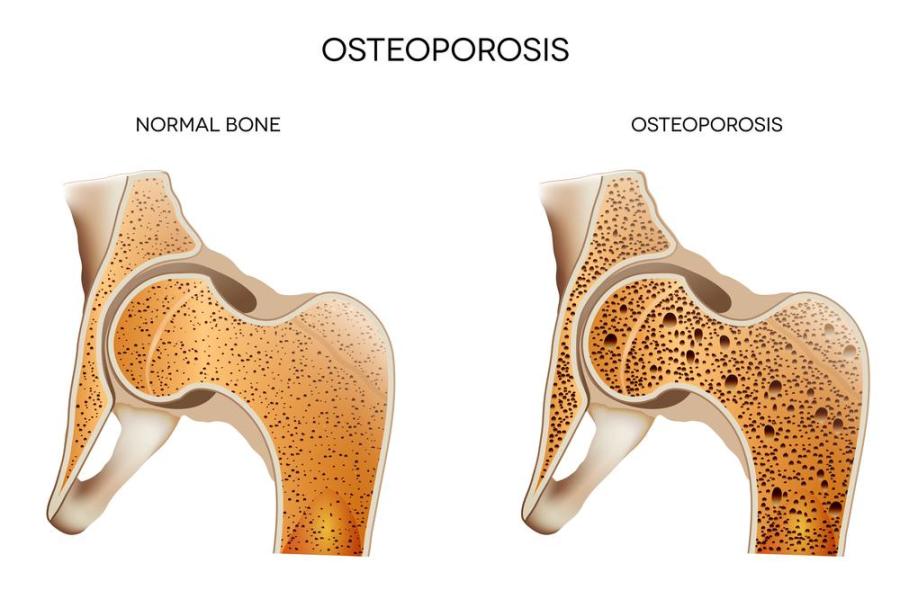
Introduction and Prevalence of Osteoporosis
Patients with osteoporosis have weak, brittle bones that are at risk of breaking easily. Osteoporosis literally means “porous bones” and is the result of several modifiable factors, such as diet and exercise and non-modifiable factors such as age, sex, and race.
Bones, like other tissue in the body, are self-renewing—up to a point. In a healthy person, old bone tissue is used up and worn out, but the old bone tissue is replaced with new bone tissue. Advanced age and other factors can harm this cycle of rebuilding. As people age, their bones are not rejuvenated as vigorously. The result is a thinning of the bone which becomes more vulnerable to injury. A patient with severe osteoporosis may break a bone by doing a very light activity such as simply bending over or even coughing. A broken hip bone is one of the most common and devastating outcomes of this condition.
Prevalence of Osteoporosis
According to the International Osteoporosis Foundation, approximately 200 million people across the world suffer from osteoporosis. Osteoporosis is more common than heart attack, stroke, or cancer.
In the United States, 44 million people have osteoporosis or low bone density. Anywhere from 24-50% of women and 7.5% men over age 50 have osteoporosis.
The United States National Institute of Health describes osteoporosis as a significant health issue. It is the leading cause of fractures; about 1.5 million fractures yearly. The NIH estimates that half of the women over fifty will break a bone as a result of this condition, and six percent of white men over fifty will break a hip for the same reason.
Osteoporosis is an extremely common condition among women over fifty and men over sixty. This disease has been linked to death and disability, mostly as a result of complications of major bone fractures. By far the greatest risk for an osteoporosis patient is the broken hip. The majority of people over fifty who break a hip never regain their full range of motion. Twenty percent of people who break a hip die within a year. That said, osteoporosis remains a manageable disease. Barring other health complications, a patient with osteoporosis who takes her medication exactly as prescribed, avoids walking on ice, jogging, and other situations likely to lead to a fall, eats foods rich in Vitamin D, calcium, and protein, avoids tobacco and alcohol, and undertakes low-impact exercise may well live just as long as someone without osteoporosis.




